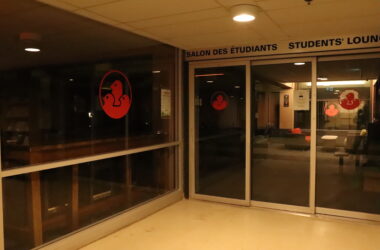The Sustainable Endowments Institute gave McGill a B+ on its annual report card for university sustainability released on October 27. However, members of the university community raised doubts about the grade’s accuracy.
According to Susan Paykin, director of communications for the Sustainable Endowments Institute, sustainability grades are calculated with data from a number of sources.
“Grading the schools entails conducting research based on publicly available information,” shesaid.
In addition, schools are asked to fill out a survey assessing their performance in nine different categories, including food and recycling, green building, transportation, and student involvement.
Associate Vice-Principal (University Services) Jim Nicell, whose role is to oversee campus sustainability, expressed concern about this procedure.
“We don’t find that there’s a whole lot of transparency in the process,” he said. “We don’t even know how the information that we’re submitting is used to come up with the grades that are received.”
Nicell pointed out that over 95 per cent of the McGill community does not commute in single-user cars, but the university received a B in the transportation category.
“If we’re being judged on our efforts, then perhaps we should have an F in transportation because we don’t [have to apply much] effort because we’re already way beyond where anybody else is,” he said. “So there’s something wrong between how they’re assessing us and where we’re at.”
Jonathan Glencross, a U3 Environment student and member of the McGill Sustainable Projects Fund, explained that the grade does not really allow for schools to articulate everything they do in terms of sustainability, and in what way these actions are meaningful.
One way Paykin suggested McGill could improve is by “expanding green building practices in new construction or renovation by developing an official green building policy.” But given the downtown location of the university, Nicell noted, there is nowhere else to build.
Moreover, McGill sits in a legally defined natural and cultural historic zone. “Under the green building [category], if we wanted to be green, the best thing we could do is knock down our historic buildings,” Nicell said.
Glencross suggested that one thing McGill could improve on, is raising awareness regarding sustainability issues.
“[It] scares me to think how 20,000 students are currently going to McGill and how many of those are going to be in positions to effect change in various [issues], but that their understanding of sustainability is going to be minimal,” he said.
According to Glencross, one of the main things students look at when choosing a university is its level of sustainability, which can be dangerous since some universities may falsely advertise as being green—a process known as green-washing.
“The recruitment offices are going to try and make the schools seem better than they are–luckily McGill doesn’t do that,” he said.
Because the grading was based on the past calendar year, it did not account for the closing of McTavish Street and Lower Campus to cars.
“These grades mean nothing,” said Glencross. “If you want meaning, do stuff. The assessment is just supposed to give people an idea, a vague idea of where we are. It doesn’t really matter at all. What matters is what we do.”









Pingback: McGill earns B+ in university sustainability rankings | Kyla Mandel Portfolio